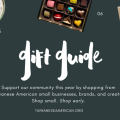
Djanav Zengror’s greeting flies through the air, and then the rest of the Ayi-Yanga troupe fills the cozy lounge of the Hearst Museum of Anthropology with harmonies. Within the intimate room, the music transports us to a wide-open space and readily calls to mind the verdant mountains of Taiwan. Their song, “Home Direction” (指路), starts with the hunter’s call. When his people hear him, they run to welcome him home. Through the interpreter, UC Berkeley student Cynthia Ji, Zengror explains that the call-and-response songs of the Bunun Tribe represent people coming together to the same space, breathing the same air.

Ayi-Yanga performs at the Hearst Museum of Anthropology on April 12, 2019. The group’s name means “missing dearly” in the Paiwan language. Left to right: Djanav Zengror (丹耐夫 正若), Umav Balalavi (烏瑪芙巴 剌拉芾), Palahu Taki Ludun (高桂英), Cheng-Hun Luo (羅正楎). Not pictured: Stephanie Zengror (紫布爾 正若)
Ayi-Yanga traveled from Taiwan to Berkeley, California, to perform at The Beauty of Indigenous Power, an exhibit celebrating Taiwanese indigenous cultures. In both music and art, tradition and modernity intersect, and different cultures share the same space. Before the reception, Zengror recounted a legend from the Paiwan Tribe in Mandarin; during the soundcheck, soprano Stephanie Zengror asked the technician to apply some reverb in English. The languages, musical techniques, and stories meld into a shared experience for everyone in the audience.
Ayi-Yanga performs “Home Direction” (0:00) and “Tearful Blessing” (4:17) at the Hearst Museum of Anthropology on April 12, 2019.
Filling space with art
The exhibit is co-hosted by the Hearst Museum and the Shung Ye Museum of Formosan Aborigines. Hearst Museum Director Benjamin Porter drew parallels between the founders of the two museums, Phoebe Hearst and Safe C. F. Lin. “They were both committed to the preservation and celebration of indigenous societies around the world,” he said. Kristin C. C. Lin, the current chair of the Shung Ye Museum and daughter of the founder, described the mission that underscores her work. “My father taught me to love the land we live on and cherish each other’s cultures.”

Djanav Zengror presents traditional Paiwan nose flutes to Kristin C. C. Lin, the chair of the Shung Ye Museum, and Benjamin Porter, the director of the Hearst Museum.
This message shines through the posters on exhibit, which have also been displayed in Japan and the UK. The posters hanging in Hearst Museum are but a small selection of over 1,500 entries in the 2017 Taiwanese Indigenous Poster Design Competition, whose theme of “sports and rhythmic beauty” translated into posters ranging from monochromatic to rainbow, historical to futuristic, stylized graphics to intricate figures.
Pointing to “Simple Beauty” by Ya-Han Hsu, UC Berkeley student Zoe Hsiao said, “The headdress reminds me of the aboriginal people from my mom’s hometown.” She had heard about the exhibit from a post on TaiwaneseAmerican.org and invited her friend, Catherine Sun, to join her. “I’m Chinese, so I don’t know much about the indigenous cultures of Taiwan,” Sun said. When she asked about the different tribes, Hsiao told her about the sixteen officially recognized tribes in Taiwan and reminisced about the Amis tribe’s harvest festivals in Hualien.

Simple Beauty by Ya-Han Hsu | Supervisor: Shang-Lin Wu
Dept. of Visual Communication Design, Kun Shan University
The Amis tribe is the subject of this work. Blocks of bright colors associated with this tribe are used in this image of an Amis dancer. Although simple, it expresses both power and beauty. The motif at the bottom presents the cultural characteristics of the Amis. The background color gradually shifts from blue to green representing sky and land, respectively, as well as the inseparable relationship between indigenous peoples and nature.
Taiwanese Art in an American Context
I’m always amazed by the ties that link our world. This art from my parents’ homeland took a journey, and I was able to view it at my alma mater, but the story encompasses more than a flight across the Pacific. In “The Pulse of Indigenous Power” by Chien-Lin Li, a flexed arm is made of motifs from fourteen tribes, each sinew a different pattern woven together in a show of strength. Each stripe carries with it the history and the future of a people, presented for interpretation at the museum. At the reception, I got to share in the viewing experience with people from the community, curious students, and anthropologists. Whether or not we have similar backgrounds, we can find common ground by sharing this space and breathing this air.
Djanav Zengror recounts the Paiwan legend of the nose flute: Upon death, the human turns into the hundred pacer snake, like the band I’m wearing on my head. After the hundred pacer snake dies, it turns into an eagle. After the eagle dies, it becomes water, which will flow upward through bamboo and reach the sky. But, when the hundred pacer snake is transforming into an eagle, it sings, so that is the sound of the nose flute. Because it is bidding farewell to the earth, it will feel a sense of sorrow, because it will be flying!
Taiwan has undergone many changes over the course of my grandparents’ and parents’ lifetimes. Though my father grew up in a small village with many people of the Atayal tribe, he didn’t hear much about indigenous cultures in school. By the time I started visiting Taiwan years later, though, my grandmother had learned the traditional dances and was performing at village festivals. Through music, art, dance, and philosophy, it’s clear that “traditional” should not be confused with “primitive.” Many cultural traditions are timeless, and still others feed into future dreams and innovations.
Check out The Beauty of Indigenous Power at the Hearst Museum through August 31, 2019.
Cindy Lee, Ph.D. is a Communications Specialist at the Advanced Light Source, Lawrence Berkeley National Lab




Leave a Reply